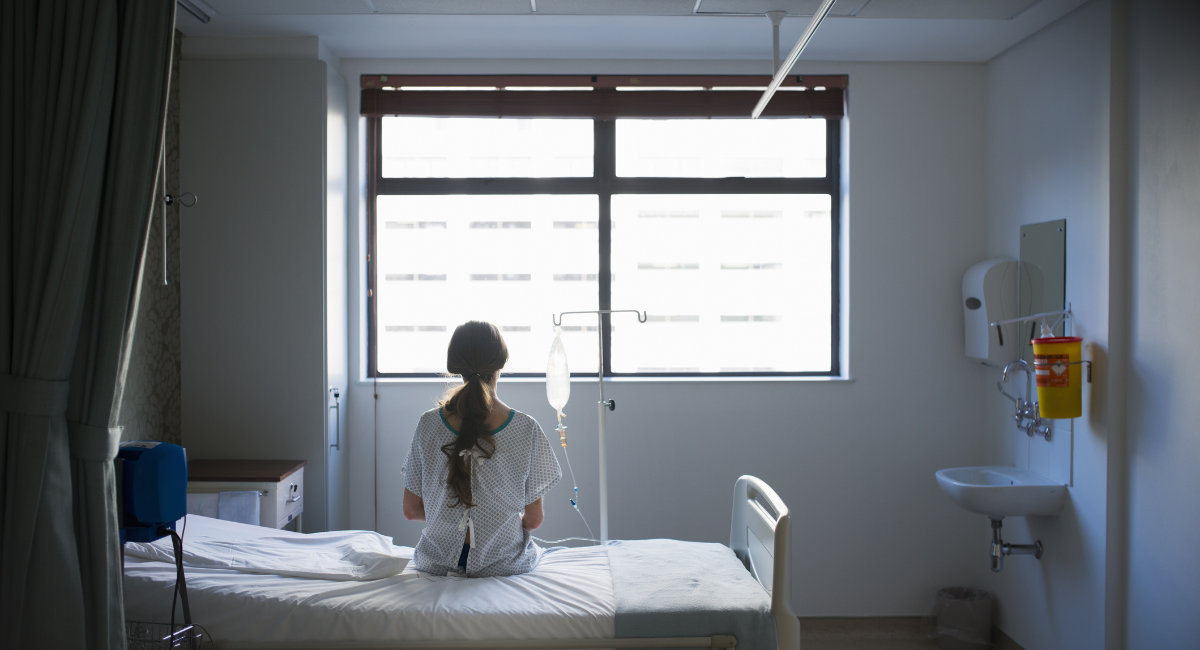In her memoir, former abortionist Dr. Patti Giebink wrote about abortion complications. She describes how an abortion affects the woman’s reproductive organs, which reveals how easy it could truly be to injure a woman:
The first pass with the suction cannula ideally gathers all of the tissue – most, if not all. A curette (a spoon-shaped instrument) is used after the suction… Scraping too hard will leave scar tissue. Scrape too softly, and any tissue left behind could cause infection and bleeding…
Once the uterine cavity is clean and all the surgical instruments are removed from the patient, the uterus should visibly contract down to its normal size. If it doesn’t, then there will be bleeding, which means that tissue is left behind, or worse, the uterus could be perforated.1
Retained tissue, infection, and hemorrhage
In its 2018 report on abortion safety, The National Academy of Sciences, Engineering, and Medicine said that 8% of suction abortions result in tissue left behind. They say the figure is “related to gestation, experience of the provider, and use of ultrasound guidance.”2
Retained tissue can cause infection. The study, “Prevention of infection after induced abortion,” published in the journal “Contraception” stated that 30% of abortion deaths are caused by infections. One study found that the rate of infection after abortion was 5.8% if the woman received antibiotics and 9.4% if she didn’t. 3 A British study called “A randomised comparison of strategies for reducing infective complications of induced abortion” found an infection rate of 5-10%.
Even going with the lowest estimate of 5% would mean that around 43,000 women suffer post-abortion infections each year. 0.4% of these women, or around 1 in 250, needed intravenous antibiotics.4
Infections after abortion can have an impact on future pregnancy. An article in the European medical journal Acta Obstetricia Gynecolica, found that the rate of stillbirth increased 379% after an abortion that was followed by an infection.
Studies show that post-abortion hemorrhage requiring transfusion or other treatment happens up to 4.7% of the time, with more recent studies reporting a rate of 1.3%, or more than 1 in every 100 women having abortions.5
Asherman’s Syndrome and Infertility
As Giebink says, when abortion causes scar tissue to form in the womb, it can prevent a fertilized egg from implanting and cause infertility. This is called Asherman’s Syndrome. According to the National Academy of Sciences, Engineering, and Medicine report, the risk of developing Asherman’s syndrome after one abortion is 13%, and 39% with repeat abortions.6
The study, “Factors affecting reproductive outcome of hysteroscopic adhesiolysis for Asherman’s syndrome” found that 42.4% of patients with Asherman’s syndrome had previous abortions.
Problems with the Cervix
Giebink describes an incompetent cervix, also called cervical insufficiency:
This happens when the cervix is weakened or damaged with the manual dilation (opening of the cervix) during the procedure … The manual dilation may cause direct trauma, such as tears, or simply weaken the cervix in subsequent pregnancies.7
The cervix can give way in a future pregnancy and cause a miscarriage or premature birth.
A study in Human Reproduction called “Health disparities in risk for cervical insufficiency” found a 149% increase in cervical after one abortion, a 366% increase after two, a 707% increase after there, and a 1136% increase after four or more.
Geibink writes, “[T]he placenta may abnormally attach, as in placenta previa when the placenta is in front of the baby. Placenta previa requires a C-section delivery and may cause serious hemorrhaging.”8
Placenta Previa
The National Academy of Sciences, Engineering, and Medicine verifies this when it says, “Vacuum aspiration or dilatation and curettage may cause scarring and adhesions in the uterus that impede proper placentation in subsequent pregnancies.”9
The study “Placental previa in relation to induced and spontaneous abortion” showed that abortion increased the risk of placenta previa by 30%. An analysis of multiple studies, “The association of placenta previa with history of cesarean delivery and abortion,” found an increased risk of 70%. And a review of eight American studies, “Etiology and risk factors for placenta previa,” showed a 50% increased risk.
Hidden Complications
Giebink says, “Abortion clinics are reluctant to acknowledge these risks and complications, and unfortunately, some patients are sent home without addressing problems.”10
She explains why many abortion providers don’t know the full extent of their patient’s complications:
Once released, patients end up calling an ambulance or going to the hospital where the ER doctors are unfamiliar with what was done, if in fact the patient even reveals she’s had an abortion.
Abortion doctors are not always from the community or don’t have admitting privileges at the local hospital, therefore any problems are not reported back to or followed up by the abortion clinic.11
- Patti Giebink, Kimberly Shumate Unexpected Choice: An Abortion Doctor’s Journey to Pro-Life (Carol Stream, Illinois: Tyndale House Publishers, 2021) 52 – 53
- The National Academy of Sciences, Engineering, and Medicine Committee on Reproductive Health Services: The Safety and Quality of Abortion Care in the United States (Washington, DC: The National Academies Press, 2018)
- Angela Lanfranchi, Ian Gentles and Elizabeth Ring – Cassidy Complications: Abortion’s Impact on Women, Second Ed.: Revised and Updated (Toronto, Canada: The deVeber Institute for Bioethics and Social Research, 2018)
- The National Academy of Sciences, The Safety and Quality…
- Ibid. It’s The National Academy of Sciences, The Safety and Quality…
- The National Academy of Sciences, Engineering, and Medicine Committee on Reproductive Health Services, The Safety and Quality…
- Patti Giebink, Unexpected Choice…, 165
- Patti Giebink, Unexpected Choice…, 166
- Angela Lanfranchi, Ian Gentles and Elizabeth Ring – Cassidy, Complications…
- Patti Giebink, Unexpected Choice…, 164
- Patti Giebink, Unexpected Choice…,, 164-165
“Like” Live Action News on Facebook for more pro-life news and commentary!







